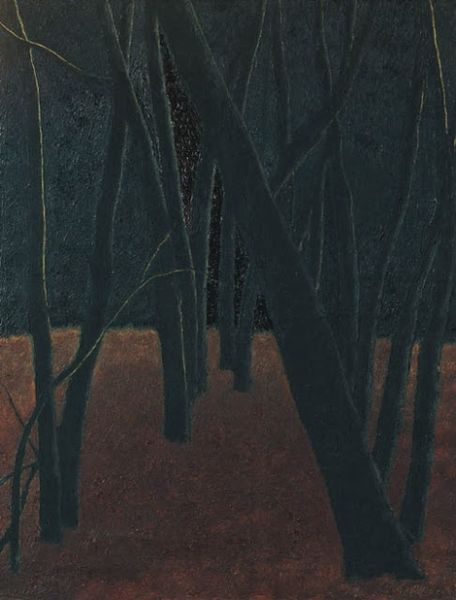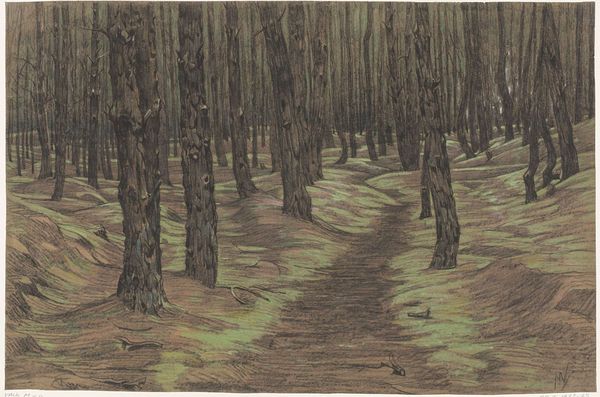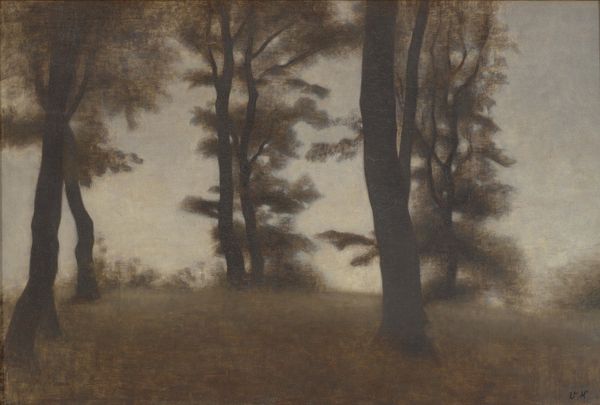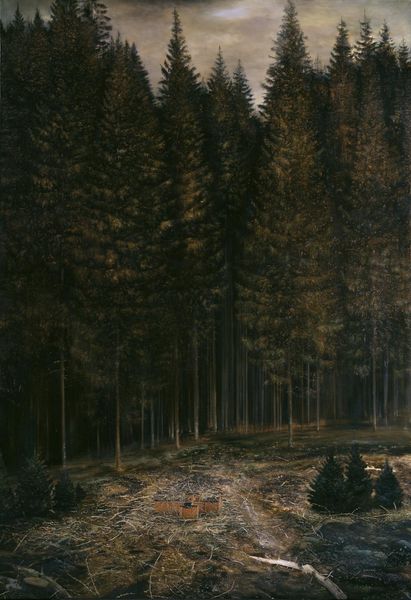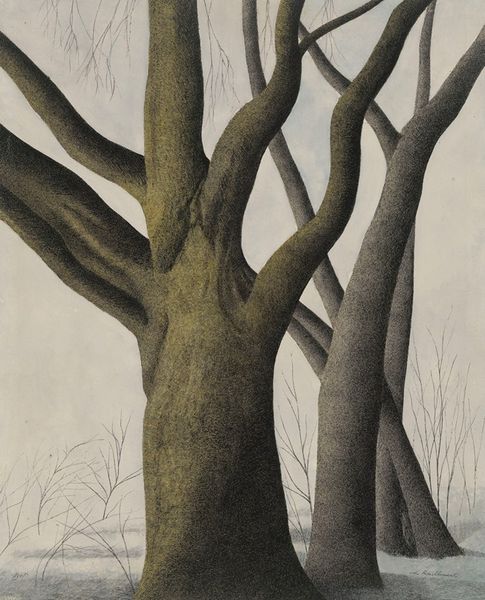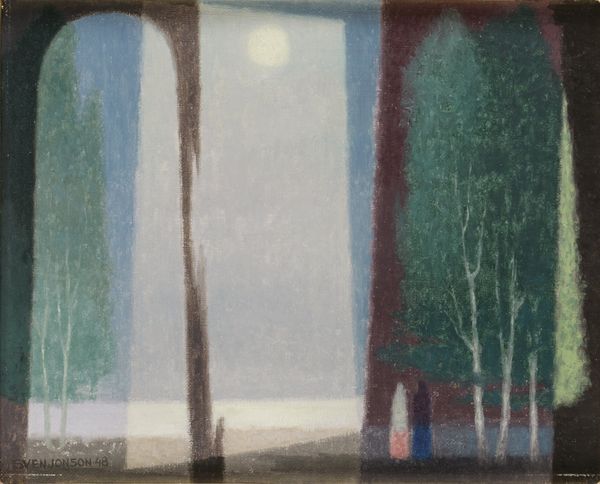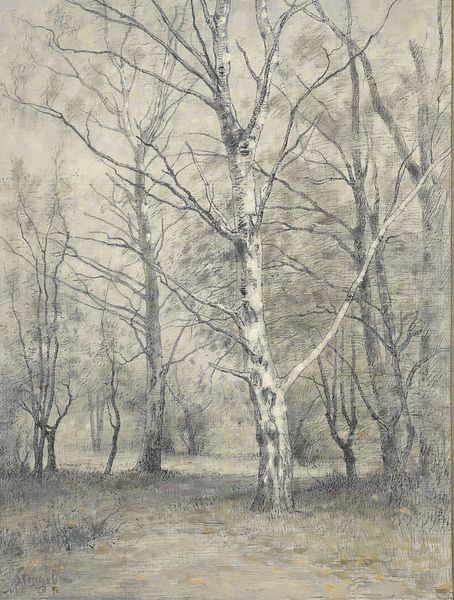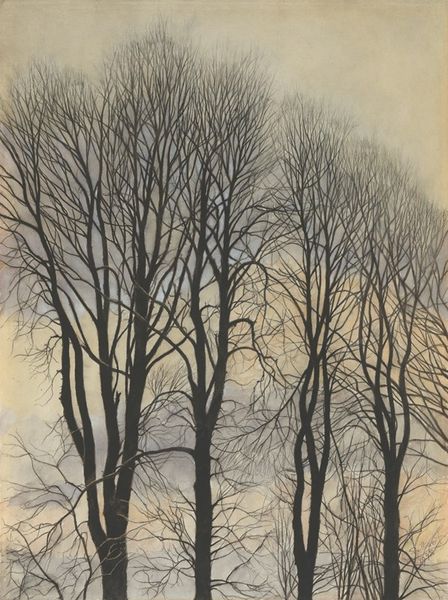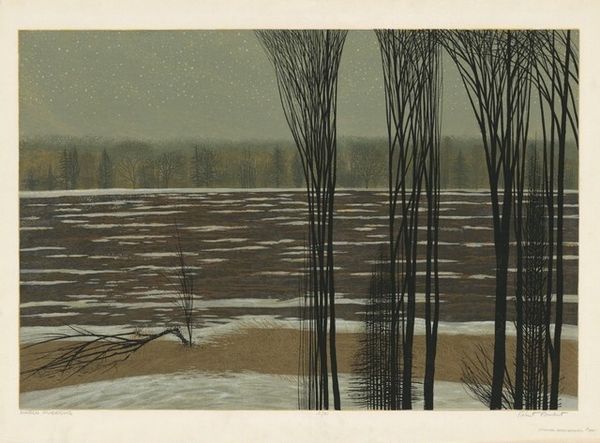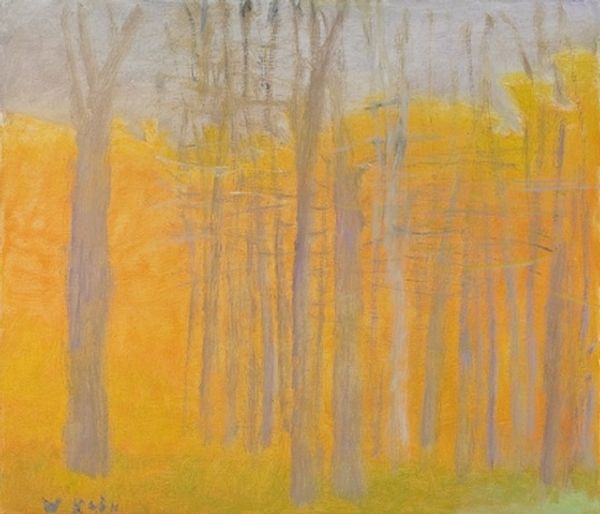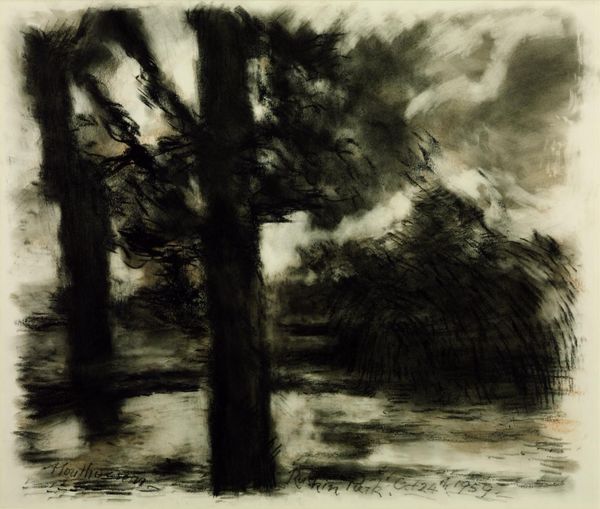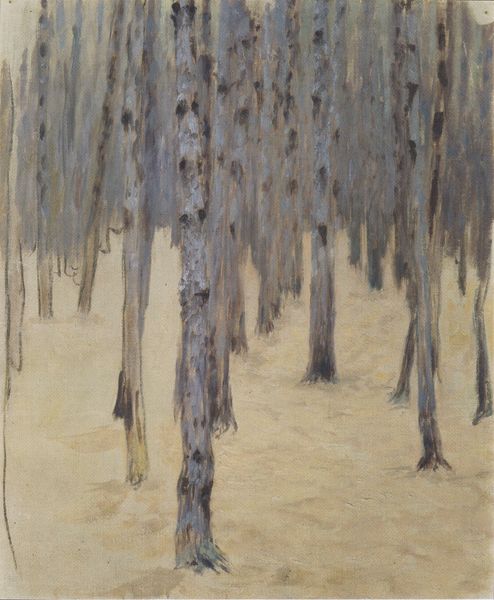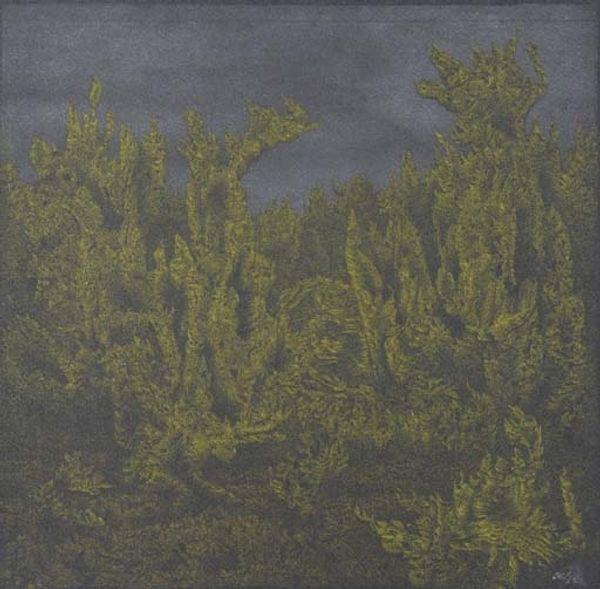
drawing, pencil, graphite, charcoal
#
drawing
#
landscape
#
charcoal drawing
#
pencil
#
graphite
#
charcoal
#
realism
Copyright: Public Domain: Artvee
Editor: Here we have Léon Spilliaert's "De brandgang," created in 1944, using graphite, charcoal, and pencil. The lines of trees create a powerful sense of receding perspective. What do you make of it? Curator: It's striking how Spilliaert renders this alley of trees, especially considering the historical context. Belgium was under German occupation at the time. Do you see any parallels between the imposing order of the trees and the political climate of that era? Editor: That's a great question. I hadn't considered that, but now that you mention it, there's a regimented, almost oppressive feel to the composition. Each tree is so similar to the next. Curator: Precisely. Think about how landscapes were used throughout art history – often to evoke national pride, a sense of belonging. But here, in 1944, Spilliaert seems to be questioning that, presenting a landscape that feels almost… authoritarian. What do you think the absence of people contributes to this feeling? Editor: It definitely adds to the isolation and perhaps the sense of something looming or threatening. If the scene had figures strolling, it could soften it. Without them, it emphasizes control. Curator: Exactly! And the title, "De brandgang," translates roughly to "the firebreak." Considering the war raging across Europe, that could be interpreted literally, as a barrier against destruction. Or metaphorically, as the attempt to control the spread of ideologies. Editor: It’s fascinating to see how the socio-political landscape might have influenced the artistic landscape here. Thanks! Curator: My pleasure. It reminds us that art doesn’t exist in a vacuum; it’s always in dialogue with its time.
Comments
No comments
Be the first to comment and join the conversation on the ultimate creative platform.
